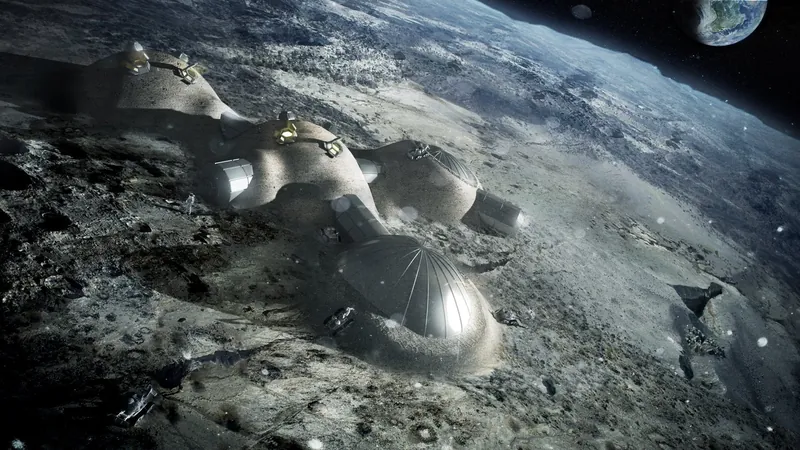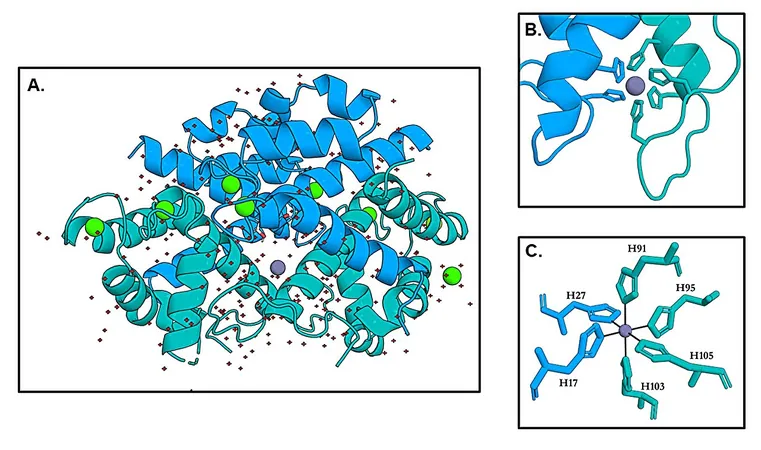
Building the Moon: Crafting Sustainable Structures from Lunar Resources
2025-06-30
Author: Jacques
NASA's Ambitious Lunar Plans By 2028
By 2028, NASA is poised to land the "first woman and first person of color" on the moon with the Artemis III mission—marking humanity's first return to the lunar surface since the Apollo era in 1972.
The Need for In-Situ Resource Utilization
As international and commercial partners rally around Artemis, the goal expands to creating a sustained program for lunar exploration, including establishing long-term habitats. Given the staggering costs of transporting heavy equipment, it's impractical to launch all necessary materials. Therefore, constructing moon habitats necessitates using local resources, a process known as in-situ resource utilization (ISRU).
Innovative Solutions in 3D Printing for Lunar Habitat Construction
A recent study led by researchers from the University of Arkansas proposes an innovative approach to this challenge, utilizing light-based sintering to create lunar bricks instead of printing whole structures. This breakthrough could revolutionize how we think about construction on the moon.
Research Team Insights and Historical Context
Researchers, including Assistant Professor Wan Shou and several talented students, emphasize that concepts for permanent lunar bases have circulated since the Apollo missions. Traditional methods for transporting the required machinery and materials prove too costly. While advancements have been made in space travel, such as reusable rockets, the expenses for full missions remain high.
The Harsh Lunar Environment: Challenges Ahead
Conditions on the moon are extreme, influencing construction methods. Temperatures vary dramatically, from a sweltering 130°F in sunlit areas to a chilling -410°F in shadowed regions. Most 3D printing techniques struggle under these conditions as they often require extra materials from Earth—adding strain to already expensive missions.
A Breakthrough in Sintering Technology
Light-based sintering, the technique proposed by the research team, uses concentrated sunlight to heat lunar regolith into a molten state. This solar energy source offers a dependable alternative to the costly transportation of energy resources.
Creating Versatile Lunar Bricks: A New Approach
Instead of attempting to construct entire structures through additive manufacturing, the team shifted focus to producing modular, interlocking bricks. This method not only conserves space but also allows for greater flexibility, akin to assembling a lunar Lego set.
Future Implications and Next Steps
Before these lunar bricks can become a reality, additional research is essential to refine the method and adapt it to lunar conditions. The team aims to create a prototype and conduct thorough testing, all while considering how the equipment will navigate the moon's terrain.
Embracing the Challenges Ahead
As Cole McCallum, a lead researcher, points out, tackling the harsh lunar environment poses significant engineering challenges. Nevertheless, the scientific principles behind these methods are well established, paving the way for future advancements in lunar construction.
The Dawn of Lunar Architecture Is Here
With this innovative approach to building on the moon, we might soon witness the dawn of lunar architecture—from modular habitats to expansive bases capable of supporting human life. The potential for exploration is limitless, and the future of living beyond Earth is rapidly coming into focus.









 Brasil (PT)
Brasil (PT)
 Canada (EN)
Canada (EN)
 Chile (ES)
Chile (ES)
 Česko (CS)
Česko (CS)
 대한민국 (KO)
대한민국 (KO)
 España (ES)
España (ES)
 France (FR)
France (FR)
 Hong Kong (EN)
Hong Kong (EN)
 Italia (IT)
Italia (IT)
 日本 (JA)
日本 (JA)
 Magyarország (HU)
Magyarország (HU)
 Norge (NO)
Norge (NO)
 Polska (PL)
Polska (PL)
 Schweiz (DE)
Schweiz (DE)
 Singapore (EN)
Singapore (EN)
 Sverige (SV)
Sverige (SV)
 Suomi (FI)
Suomi (FI)
 Türkiye (TR)
Türkiye (TR)
 الإمارات العربية المتحدة (AR)
الإمارات العربية المتحدة (AR)